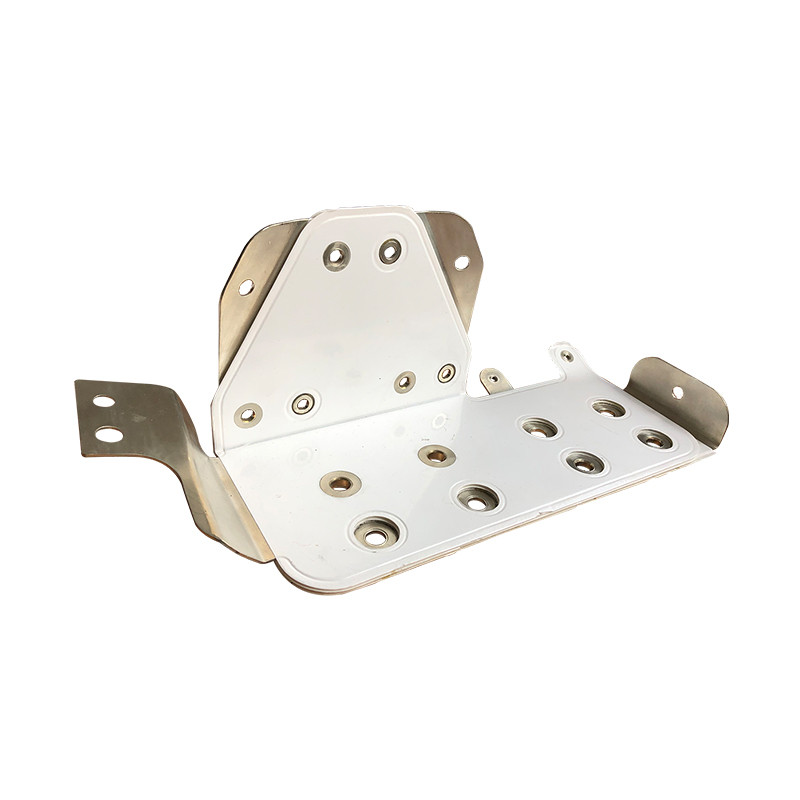

Category


Photos are for informational purposes only. View product specification
please use latin characters
Laminated Busbars are a technologically advanced solution for electrical current transmission, ideal for applications requiring high performance and low inductance. Laminated Busbars feature a multi-layered design in which the conductive layers are separated by dielectric material. These connections are characterized by low impedance, reliability, and help to speed up the assembly process and save space compared to traditional wiring.
Laminated Busbars available at DACPOL are custom-made and based on the customer's drawings.
| Operating Voltage | 0~20kV |
| Rated Current | 0~3600A |
| Maximum Size (Dimensions) | 900~1900MM |
| Flame Test | UL94 V-0; EN45545 |
| Conductor Material | T2Cu, 1060 AL |
| Conductor Surface Coating | Silver plating, tinning, nickel plating |
| Connection Types | Pressing, riveting, welding |
| Insulation Resistance | 20MΩ~ ∞ |
| Partial Discharge | Less than 10PC |
| Operating Temperature Range | -40+105°C |
| Insulating Materials | PET, PI, NOMEX, epoxy resin |
In railways, laminated busbars are an essential part of electrical systems, ensuring reliable power transmission at high voltages and currents. Thanks to their low-inductance design, they minimize energy losses, which is critical for the efficiency of traction systems.
Laminated busbars are used in power grids, where resistance to high currents and voltages is crucial. Laminated Busbars ensure safe and stable energy transmission in power plants and relay stations, minimizing losses caused by inductance.
In vehicle electrical systems, especially in electric and hybrid cars, laminated busbars are used to manage current flow in demanding work environments. They provide stability and safety in systems ranging from low to medium voltage.
In wind turbines, laminated busbars are used to transmit energy from generators to the grid. Their resistance to external factors and low-inductance properties make them ideal for working in demanding conditions, such as fluctuating temperatures and high current loads. Laminated busbars are also used in photovoltaic systems to efficiently transmit electricity from solar panels. Thanks to their multi-layered design, they provide stability and high performance, which is crucial in large solar installations.
Are you interested in this product? Do you need additional information or individual pricing?
Laminated Busbars are a technologically advanced solution for electrical current transmission, ideal for applications requiring high performance and low inductance. Laminated Busbars feature a multi-layered design in which the conductive layers are separated by dielectric material. These connections are characterized by low impedance, reliability, and help to speed up the assembly process and save space compared to traditional wiring.
Laminated Busbars available at DACPOL are custom-made and based on the customer's drawings.
| Operating Voltage | 0~20kV |
| Rated Current | 0~3600A |
| Maximum Size (Dimensions) | 900~1900MM |
| Flame Test | UL94 V-0; EN45545 |
| Conductor Material | T2Cu, 1060 AL |
| Conductor Surface Coating | Silver plating, tinning, nickel plating |
| Connection Types | Pressing, riveting, welding |
| Insulation Resistance | 20MΩ~ ∞ |
| Partial Discharge | Less than 10PC |
| Operating Temperature Range | -40+105°C |
| Insulating Materials | PET, PI, NOMEX, epoxy resin |
In railways, laminated busbars are an essential part of electrical systems, ensuring reliable power transmission at high voltages and currents. Thanks to their low-inductance design, they minimize energy losses, which is critical for the efficiency of traction systems.
Laminated busbars are used in power grids, where resistance to high currents and voltages is crucial. Laminated Busbars ensure safe and stable energy transmission in power plants and relay stations, minimizing losses caused by inductance.
In vehicle electrical systems, especially in electric and hybrid cars, laminated busbars are used to manage current flow in demanding work environments. They provide stability and safety in systems ranging from low to medium voltage.
In wind turbines, laminated busbars are used to transmit energy from generators to the grid. Their resistance to external factors and low-inductance properties make them ideal for working in demanding conditions, such as fluctuating temperatures and high current loads. Laminated busbars are also used in photovoltaic systems to efficiently transmit electricity from solar panels. Thanks to their multi-layered design, they provide stability and high performance, which is crucial in large solar installations.
Your review appreciation cannot be sent
Report comment
Report sent
Your report cannot be sent
Write your review
Review sent
Your review cannot be sent
